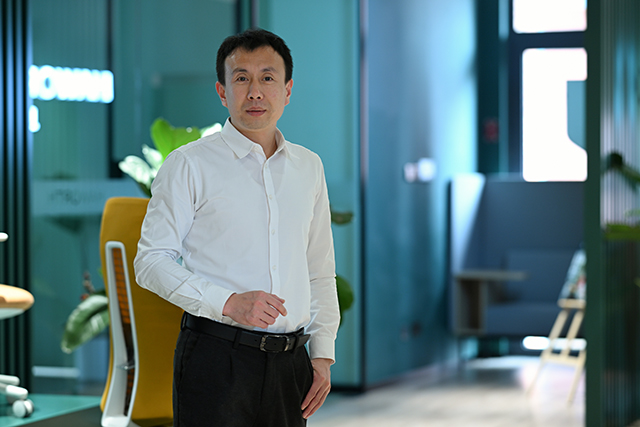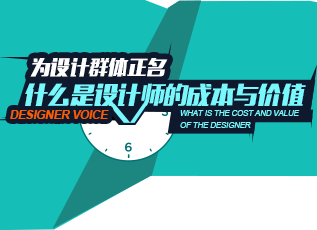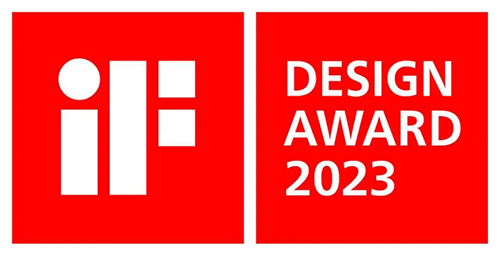八问2015年米兰世博会中国馆主持建筑师陆轶辰
来源:古德设计网 时间:2015-05-25 11:01:08 [报告错误] [收藏] [打印]
【蔡沁文】可能我们把这两个名词可以再打开讨论。比如像陆老师刚说的,“形式”肯定不是纯粹的形式。建筑师倾向于使用某种形式,往往因为它在我们的文化或者意识形态里具有某种信息,符合这个设计的身份的人们的期望;中国馆的形式就有这样的一方面。而“功能”一词也不是仅仅是“使用功能”,也有可能人们用的方式,这里是有很大挖掘空间的。建筑师不会去过多挑战比较稳定的使用功能;但可以通过某种形式激发某一方面的使用方式,可以是视觉感受,对光、对尺度;可以是动态感受,行走、穿插;更多的是其他的。这样的互动是良性的;剩下的事可能就是程度问题,见仁见智了。不同类型的建筑这个动态平衡都不一样,对这个平衡的把握有可能让整个设计极富创造性,所以我觉得这个永远都是建筑设计中最吸引人的地方之一。
【陆轶辰】 I’m not quite interested in pure forms, but more in what the visitors feel inside the space. It’s a basic thing that architecture is to be seen, but on a higher level, to be experienced. And the functions are dissolved in the space. If you look at the study model in the middle of 2013, you’ll see maybe more interaction between the interior and the roof system, in the sense of architecture. But exhibition buildings really depend on the needs of the interior display items. The pavilion contains the illuminated LED ‘wheat field’ of 400 square meters, designed by Prof. Shi Danqing of Tsinghua University. A large, column-free space is necessary for the visitors to see the LED field from all angles which led to a different dialogue between the roof and the main exhibition space.
【蔡沁文】 It’s probably more interesting if we unpack the two terms to have the discussion. For example, as Prof. Lu just said, ‘form’ never means the pure shapes. Certain forms are preferred by the architects because there are messages in them. The messages have always been there in the culture or ideology of us and they match the identity and the expectations of the design project. The form of the pavilion has to do with it. And ‘function’ is not just ‘usage’ but ‘programs’, the ways people use the building; then there’s a lot to explore. Architects wouldn’t challenge the stable usages of the building but can choose the form to stimulate one of the aspects of how the buildings are used; it can be visual experience, of light, scale; it can be movements, walking, trespassing; there are much more of others. An interaction like this is positive. The rest of the question is to which extent and how, depending on the architect. Different types of buildings have different dynamic balance as well. How to deal with the balance can make the design extremely inventive that’s why I think it will always be one of the most attractive things about architectural design.
【记者】建筑的形式和屋顶形成的内部空间具有很明确的方向性,不过从平面来看,内部流线的组织似乎有自己的方向,您是否同意,对于这两者方向性之间存在的张力您是怎么看的?
The shape of the architecture and the interior space it forms has clear directionality. But the organization of the internal circulation seems to have its own directions. Do you agree? What do you think of the tension between the two different directionalities?
【蔡沁文】出发点是建筑师希望在最大程度上给屋顶下的展陈、麦田空间留出了自由度,这一点在建成的结果中也是能很明确看到的。比如屋面作为一个自由延展的物体“罩”在景观和麦田一米高的这个块上,所有的活动是从这个块里面掏出来的空间。人们在这个“田野”里行走的时候,屋顶则在不同的高度上出现在他们的视线中。中国馆的设计出于各种原因,只能做到这一步,而要将屋顶和下面的流线整合的更严谨,把一种无意识的张力转化成有目的的张力,则需要更微妙的技巧和设计师的敏感度。这在我们以后的设计过程中会是很有意思的,我们为此还挺乐观甚至兴奋的。
【蔡沁文】 The starting point was that the architect wanted to leave maximum flexibility for exhibition items and the LED field. This intent is clearly there in the final constructed pavilion. The roof is a free style artifact floating above the continuous field of the landscape and the LED installation which is at the height of 1 meter above ground. All the public activity space is ‘carved’ out of the field. While people are meandering within the volume, they encounter the roof at different heights. For various reasons, the China Pavilion could only push to this point; to further integrate the roof and the circulation, much more skills and sensitivity would be needed to transform the tension into something more intentional. This will be more interesting point in our future design process. And we are actually optimistic even excited about it.
【记者】在建筑图解中您描述了从城市轮廓到自然轮廓的过渡,这样的设计方法您认为在您今后的设计中还会出现吗?又或者,关于设计,您是每一个项目都希望有不同想法的建筑师,还是项目的想法之间会互相联系,累积的建筑师?
In the diagrams you described the transition between the city profile and the nature profile, do you think the same design method will appear in the subsequent design projects? In other words, regarding design, are you an architect who would like to have a different idea for each project or who would prefer the project ideas interrelate and accumulate?
【陆轶辰】 我们这一代建筑师的工作方式和盖里、霍尔他们肯定是不一样的。比如我会尽量不去画草图,而让团队不同背景的建筑师们来讨论,恰当的时候组织各专业顾问来阶段性地“批”这个设计。我们几个来主导方向。我们用大量的物理模型,来让建筑与场地“对话”,让建筑自己按它应该长成的方式“生长”。功能、造价、结构、材料都是形式生成过程中的“酵母”,而建筑师是指挥家,我们用最真诚的方式来推进设计的过程,最好的技术手段来解决设计中遇到的问题。让项目和建筑自己说话—仅此而已。之前不要去预设,只要过程充实,结果就是水到渠成的事。
【陆轶辰】 The ways architects of our generation work are definitely different from that of Gehry or Holl. For example I would rather not to sketch but to have a team discussion with architects from different backgrounds, then periodically invite consultants to give critics. A few of us core members guide the direction. We quite many physical study models to let the architecture ‘talk’ with its site then let it ‘grow’. Function, budget, structure and materials are all catalysts of the generation of the form; the architect is the conductor moving the design process forward in the most honest way and solves the problems with the best technical skills. Let the project and the building speak – this is it. Without a pre-definition, as long as the process is rich, the result comes rather naturally.
相关文章
-
王耀:满足客户的客户需求 才是好作品

面对竞争日趋激烈的市场竞争,建筑装饰设计企业应该如何应对?作为设计院的领导,如何引导职场新人快速适应岗位
- 张展翼:平衡设计中的逻辑和非逻辑
- 刘亚滨:青春一路狂飙
- 设计师高媛:没有完美的设计,都有不同的遗憾
- 优秀指导老师专访 | 从选手到导师 周梦琪的“中装杯”之路
- 中装新网专访 | 蒋燕微:用热爱,谱写设计的每个篇章
- 中外建姜靖波:深化设计未来也许更多是经验和软件的结合
- 鴻樣设计郑惠心:创造多方共赢的互动空间
- 南通装饰设计院秦岭:成功的设计创意是实现得了的!
- 蒋缪奕:豪宅市场未来的发展方向
-
什么是设计师的成本与价值

近日,《你个设计师有什么成本?》一文刷爆朋友圈,文中讲了一个故事,表达了大众对成本的理解,也提出了一个有
LINKS
中国室内设计与装饰网 | designboom设计邦 | 新华网 | 中国建筑新闻网 | 搜房家居网 | 北京市建筑装饰协会 | 中装设计培训 | 凤凰家居 | 中国建筑与室内设计师网 | 中国网建设频道 | 筑龙建筑设计网 | 视觉同盟 | 湖南室内设计师协会 | 城视窗 | 中装协设计网 | 非常设计师网 | 新家优装 | 行走吧,媒体团! | 新疆室内设计联盟 | YANG设计集团 | 中式设计 | 大宅国际别墅装修设计 | 四合茗苑中式装修 | 设计王DesignWant & 住宅美学Living&Design |





